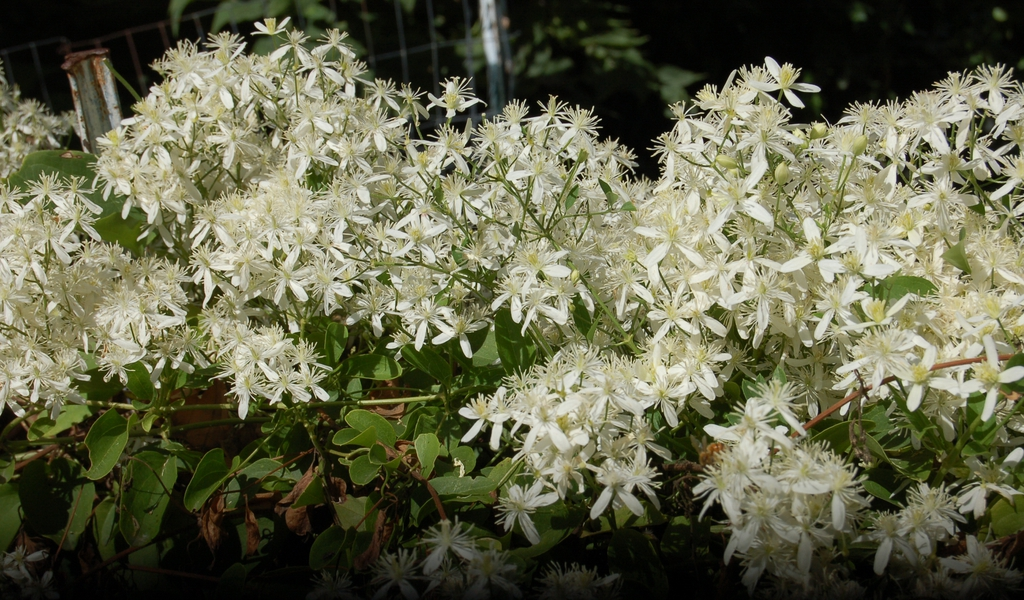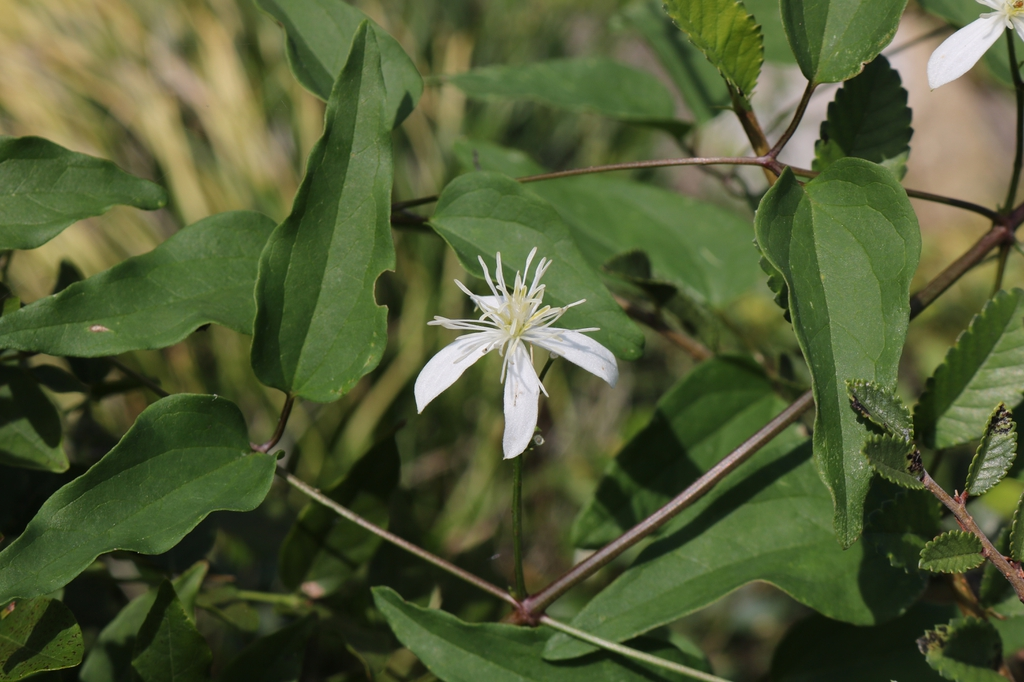Invasive Species Information
What is an invasive species?
There is more than one definition for “invasive species.” In general, an invasive species is a plant introduced to an area from another part of the world (i.e., non-native), spreading aggressively and negatively impacting native species and overall ecosystem function. It is also worth noting that not all non-native plants are invasive and there are also invasive animal species. This document takes a look at plants.
What is a noxious weed?
Some invasive plants are categorized as “noxious weeds” which means they are aggressive enough to be harmful to environmental or human health or well-being, but they also have the potential to be eradicated or controlled within Washington. They are harmful because they reduce crop yields, destroy native plant and animal habitat, damage outdoor recreational opportunities, clog waterways, lower land values, create erosion problems and fire hazards, and (sometimes) poison humans and livestock. Unlike invasive species, noxious weeds are legally defined in Washington State, with an obligation on the land-owner to control the plant to some degree depending on its classification (A, B, or C). Some invasive plants are not worthwhile to attempt removing (e.g, Hedge Bindweed), so they are not listed as noxious weeds.
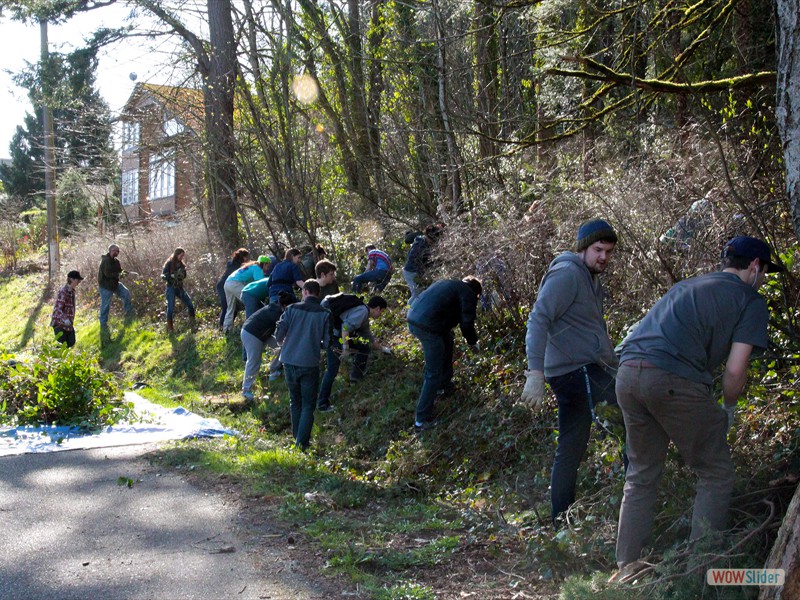
What can we do to prevent the spread of invasive species?
- Avoid planting invasive ornamental plants
- Don’t dump aquariums or houseplants into the environment
- Buy firewood from the same place that you are burning it to prevent the spread of invasive insects
- When traveling, clean clothes, boots, animals, and boats to prevent spread.
- Have you ever seen boot brushes/hoof picks at trailheads? Use them on the way in and out!
Common Invasive Species
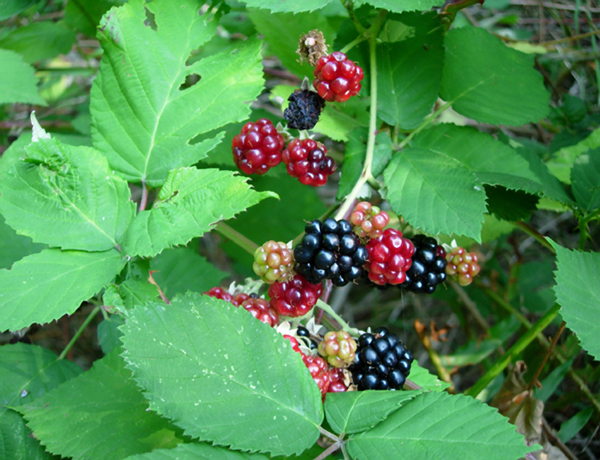

Washington State Noxious Weed Control Board
https://www.nwcb.wa.gov/weeds/himalayan-blackberry
Himalayan Blackberry (Rubus discolor, Rubus procerus, Rubus bifrons)
Identification:
- Five/three rounded alternately arranged leaves
- Flower clusters of 5-20 flowers, with small (1 in diameter) delicate white-light pink flowers with five petals and hair like stamen
- The thorny stems/canes are angular, not round and can be up to 40 feet long, and then re-root when they reach the ground
- Berries are hard and green or red when unripe, and black or purple, soft and sweet when ripe. Berries smell and taste sweet and earthy
- NOT trailing blackberry, a native species. Trailing blackberries usually have only three leaflets, and usually grow along the ground with smaller fruits and narrower canes.
More info:
- The Himalayan blackberry is a plant native to Asia, which quickly overgrows large areas, reducing habitat for native species
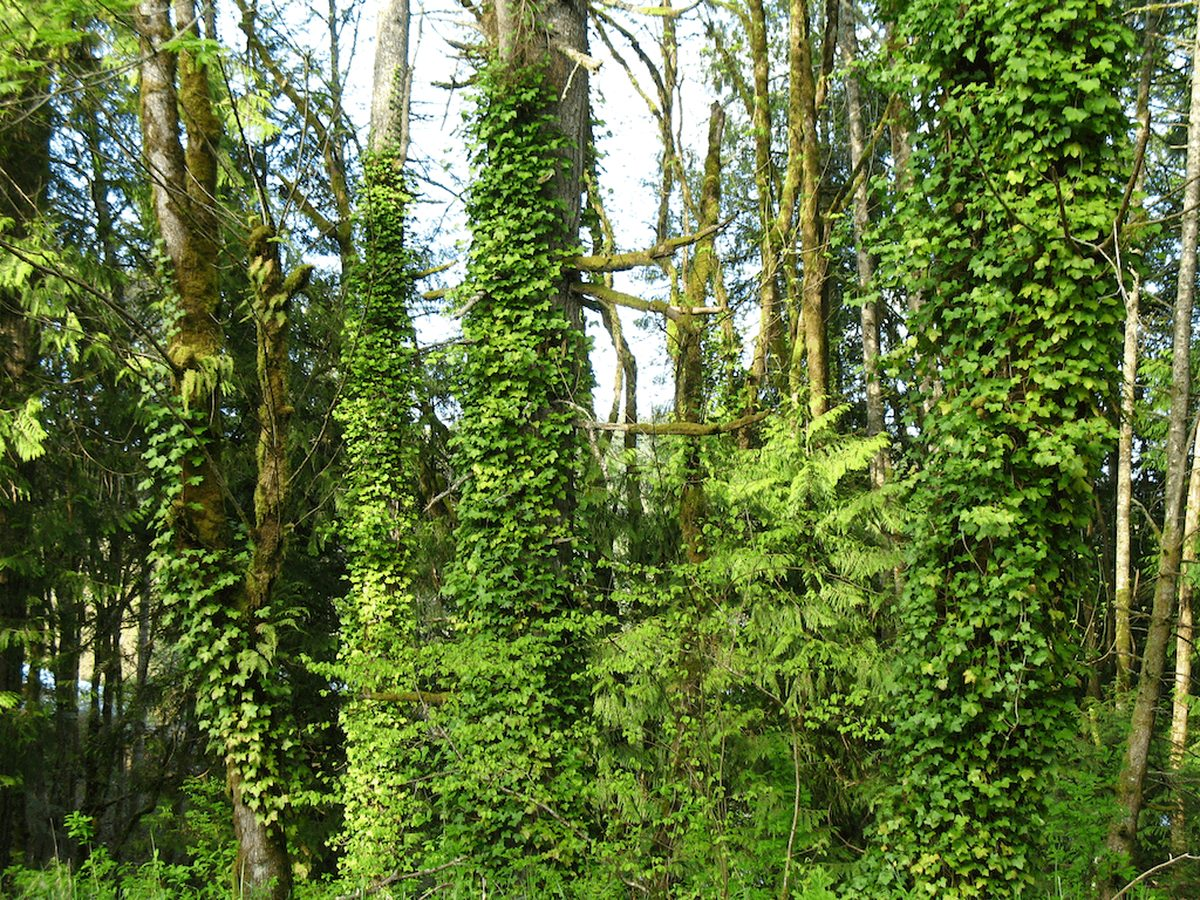
Washington State Noxious Weed Control Board

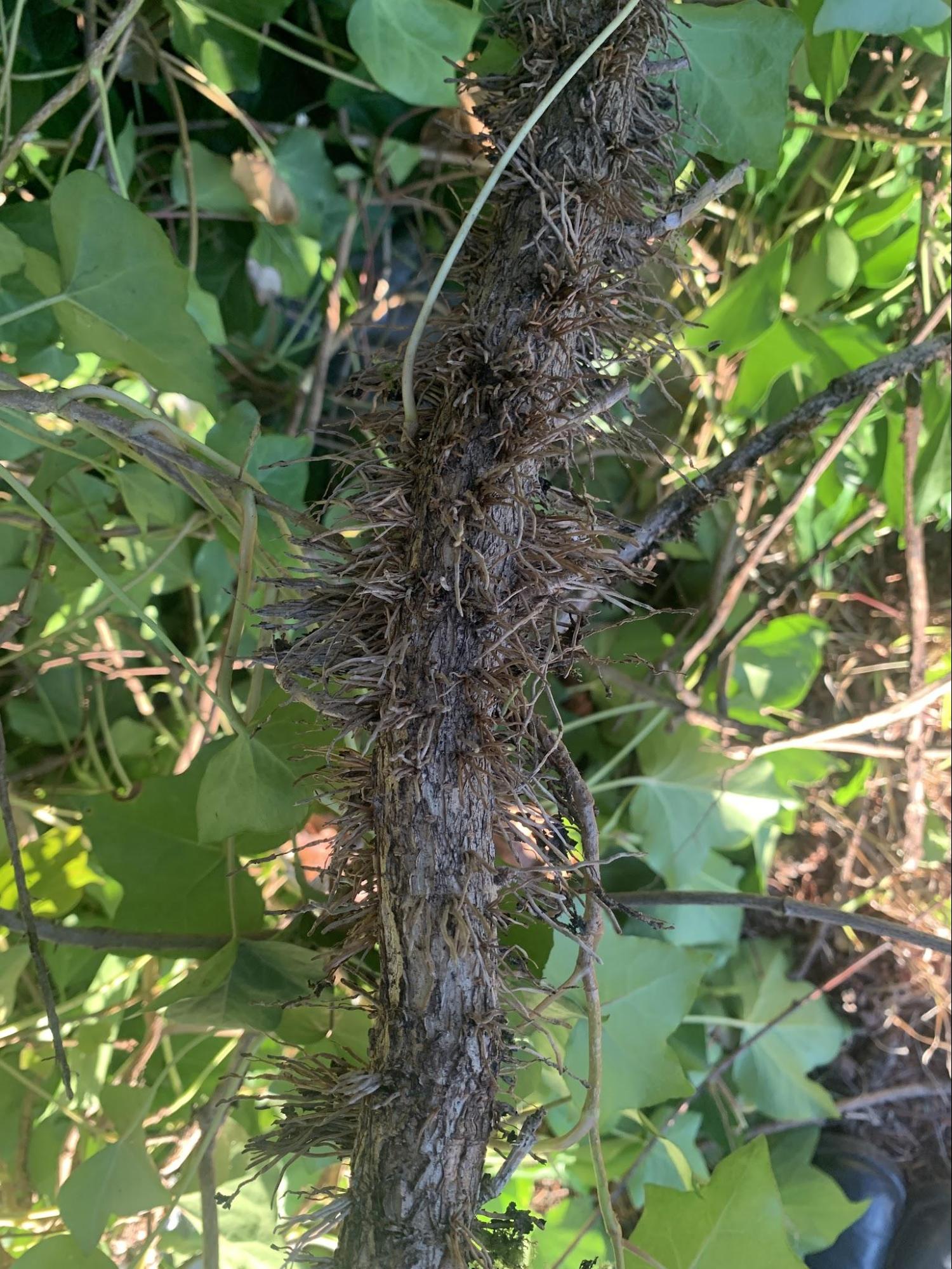
Photo credit Eva Araujo
English Ivy (Hedera helix 'Baltica', Hedera helix 'Pittsburgh', Hedera helix 'Star', Hedera hibernica 'Hibernica')
Identification:
- English ivy is an evergreen plant, with dark green lobed, alternative leaves which feel smooth on top and rougher on the underside
- Vines grow rootlets to cling onto surfaces as they climb. They can become as thick as four inches or more in diameter, and feel scratchy like twine
- Mature plants grow small yellow-green flowers in the fall, and dark purple berries in late winter/early spring
More info:
- Refers to a group of ivy species, most of which came from Europe. It both outcompetes native species, and kills trees by shading them out or acting as a wind sail
- The sap and stems can also cause skin irritation, and if consumed in large amounts is toxic to people and cattle
- Since it has shallow roots but outcompetes native plants, it can increase slope failure problems
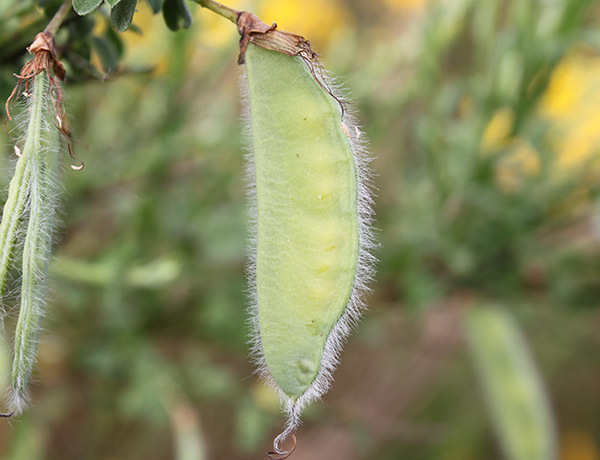
https://www.nwcb.wa.gov/weeds/scotch-broom
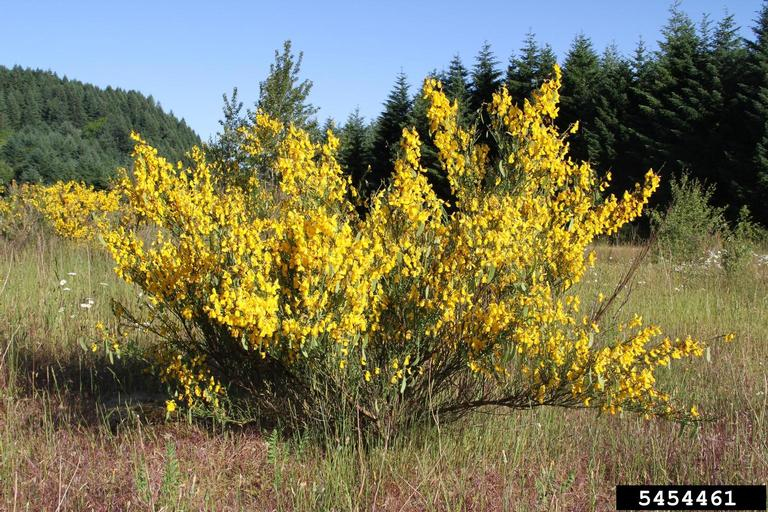
Eric Coombs, Oregon Department of Agriculture, Bugwood.org
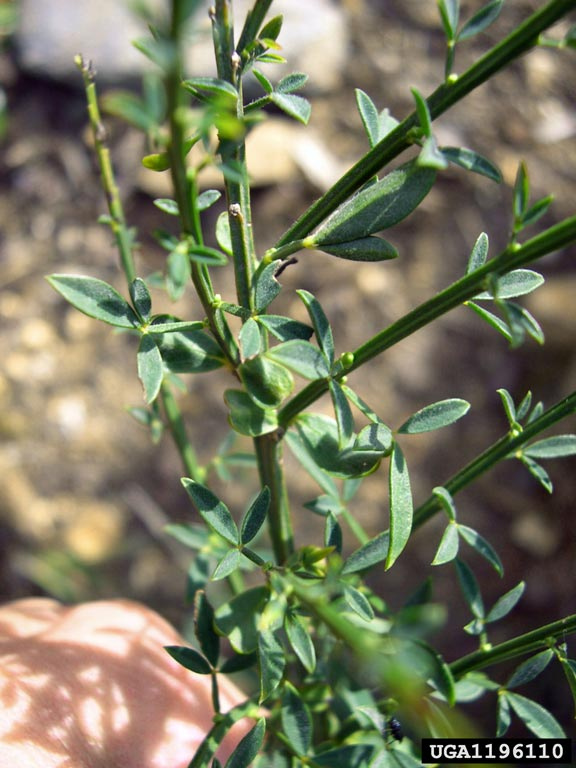
Tom Heutte, USDA Forest Service, Bugwood.org
Scotch Broom (Cytisus scoparius):
Identification:
- Bright yellow pea like flowers on evergreen branches with simple pointed leaves up to an inch long
- Flowers are sweet smelling
- Gets hard black seedpods with hairy edges in the spring, which start out as green
- Can grow 6 to 10 feet tall
More info:
- In the pea family, and outcompetes native plants and can cause fire hazards
- Can slow restoration of forests and wetlands
- Can cause mild poisoning to animals like horses
- Seedpods can survive for up to 60 years
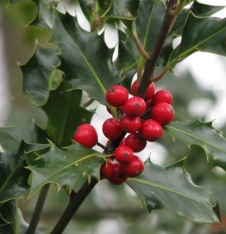
Whatcom County Noxious Weed Control Board
https://www.whatcomcounty.us/DocumentCenter/View/27151/English-Holly
English Holly (Ilex aquifolium)
Identification:
- Alternate leaves are 1-3 inches long, waxy, and have sharp spines along the edges.
- Distinctive hard red fruit in late fall-winter, with three or four small seeds
- This evergreen shrub can grow 15-30 ft tall, with a smooth, silver/gray trunk.
- NOT Oregon grape, a native plant which has blue/purple berries, and less waxy, opposite leaves with much smaller spines
More info:
- Berries are poisonous to humans and pets
- Was introduced from Europe for ornamental purposes.
- Birds easily spread the seeds, and it outcompetes native species.
Clematis (Clematis terniflora)
Identification:
- Climbing, flexible vine with opposite leaves and 4-5 petals on white flowers
- Flowers get long stamens which make them feel and appear fuzzy
- Typically brown stems
More info:
- Very poisonous if eaten
- Not as common as the other plants mentioned here, but present at our site
- Native to Japan
- Similar to english ivy, clematis quickly grows up over trees and shades out native species. It poses similar risks
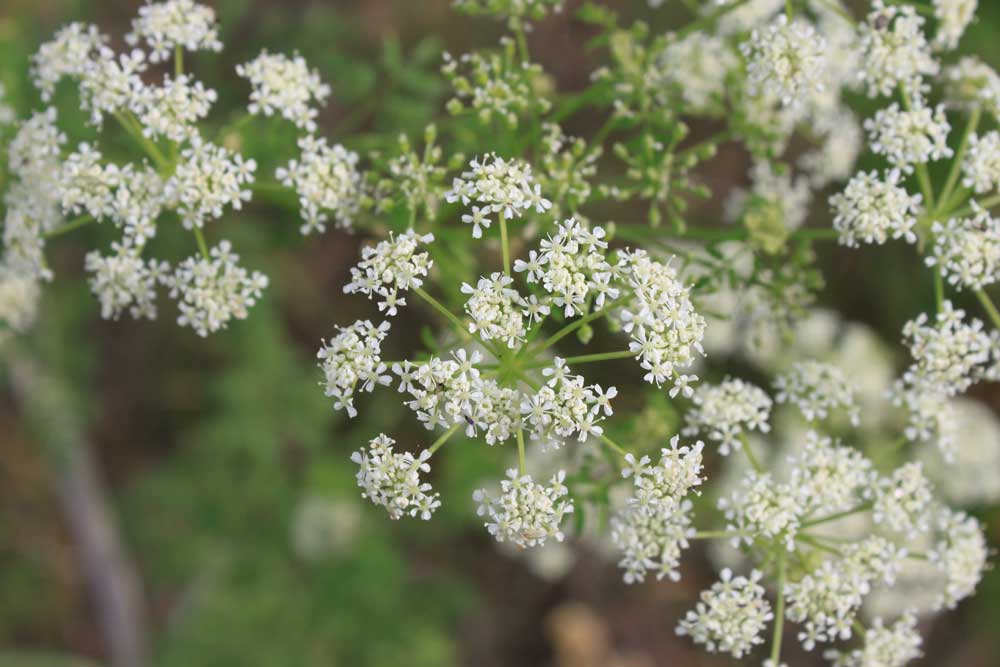
Washington State Invasive Species Council
https://invasivespecies.wa.gov/priorityspecies/poison-hemlock/
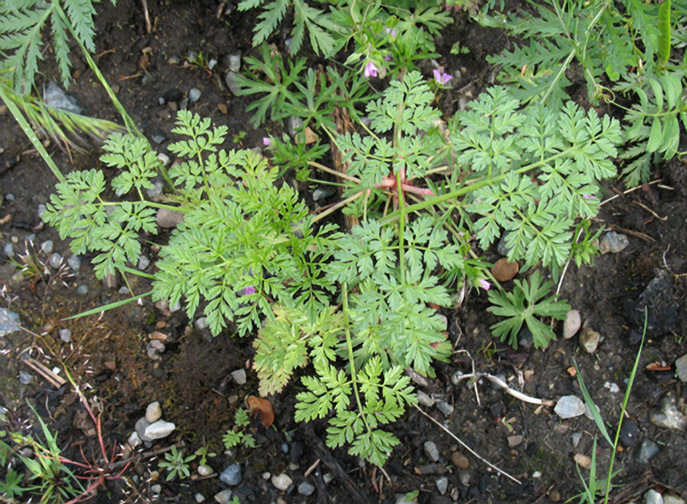
Washington State Noxious Weed Control Board
https://www.nwcb.wa.gov/weeds/poison-hemlock
Poison Hemlock
Identification:
- Leaves are carrot or fern like, and small white flowers are arranged in clusters on the end of stems
- Stems have reddish purple streaks, are hollow, and branch into several stems and then clusters of compound leaves
- Leaves have a musty smell when crushed
- Can get 6-10 feet high
- NOT Queen Anne's Lace (Daucus carota) which has hairy stems and only one flower cluster per stem, and is also generally 3ft tall or shorter
More info:
- Can kill humans and animals in a few hours if ingested, wear gloves to handle
- Touching poison hemlock with bareskin can risk exposure to the poison penetrating the skin and into the bloodstream
- A member of the carrot family
Other non-natives you may see often but are not as threatening:
- Creeping buttercup
- Canada Thistle and Bull Thistle
- Teasel
- Tansy ragwort
Recommended Web Resources
The Washington State Noxious Weed Control Board determines which plants are included on the list. The Whatcom County Noxious Weed Program is another great resource for learning more about common invasive plants in our area. The Pacific Northwest Invasive Plant Council is a non-governmental organization working to educate the public, collaborate to provide solutions, and also provide research and volunteer opportunities for anyone interested. They have an informative website and a nice discussion about our role in managing invasive species in the long-term.
Questions to Contemplate
- Why does LEAD remove invasive plants manually instead of using a much easier and quicker chemical herbicide treatment?
- Why does LEAD remove some plants with desirable qualities, such as Himalayan blackberry with its yummy berries?
- Why should we even care? Won't evolution just take its course in the long-term and nature will have her way no matter what we do?
- What would be the consequences if nobody did anything?
